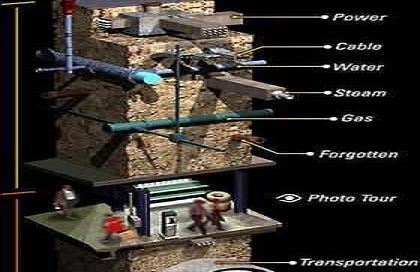I've seen this happen to so many smart people. They read a study and buy into the plan without tearing into the details. These advocates of streetcars, trams, monorails, light rails, and whatever so often present studies showing “if you buy and build our project, millions of dollars of development will occur" or " The streetcar generates its own financing through the value it creates and the subsequent uptick in commercial property tax revenues (https://omahastreetcar.org/#tab-35380)."
The problem is correlation is not causation. Often, these projects are placed in areas where the infrastructure is severely outdated, deteriorating and in need of large scale investments. I remember looking at a commercial building in downtown Omaha which had been empty for decades and always up for sale. The owner had no interest in developing it because it would cost tens of thousands of dollars to bring it up to code and yet even with upgrades, it was still connected to outdated utilities which were in bad condition. So the building sat empty.
Yet, with these projects, such as Omaha’s streetcar, tens of millions of dollars has to be spent on upgrading the infrastructure (https://nebraskaexaminer.com/2024/06/18/price-jumps-for-modern-day-streetcar-project-in-nebraskas-largest-city/). Merely upgrading the infrastructure, including bridges, will result in hundreds of million dollars of development. Yes, the streetcar is a catalyst for such investment and improvements but not the cause. This upgrading of infrastructure involves miles of upgrading and this spawns incentive for investment and development. The TIF for the large area of and around the streetcar area guarantees a bunch of developers and investors wanting to develop the area. Yet, if the streetcar does not have the value of relieving congestion in the area, it will eventually become an eyesore, and be despised if not just a magnet for criminals.
Please note, there are no plans to build a streetcar from Elkhorn to Gretna or Westroads to Bennigton. Why? If streetcars were so great, would we not build them there too? This is why the advocates of the Omaha streetcar should refer to the project as an investment in infastructure as well as a streetcar and not merely a fricken streetcar which is quiet dishonest.
Half of the problems merely with the Crossroads project has been the infrastructure (https://nebraskaexaminer.com/2024/03/04/price-public-incentives-increase-under-updated-861-million-omaha-crossroads-mall-makeover-plan/). At the same time, Omaha is paying steeply merely to separate sewers (https://omahacso.com/program-projects/interactive-project-map). Eventually, the improvement of the infrastructure does foster development but it is very costly.
But back to the streetcar, there are other problems with a streetcar which should at least tentatively be addressed such as crime. At the same time, a successful streetcar must alleviate congestion. However, there are reports showing this type of transportation has these problems and numerous others (https://www.americanexperiment.org/reports/off-the-rails-minnesota-transportation-after-covid-19 Short link http://tiny.cc/xc6qyz).





Andrew, you are so right about the streetcar. There is a veil over the eyes of those who are proposing it. That veil is the same one that is blinding the eyes of big government which is not preparing our fiscal future for our children and grandchildren.
Omaha's downtown area desperately needs renewal. When you get away from the pretty glass high-rises, the area is industrial/dismal. And there's a jail. Right smack dab in the middle of DOWNTOWN. There are also old, poorly maintained industrial buildings turned into apartments and apartment buildings that look like they might have been built in the 40's and 50's (if not earlier). And some of those industrial/apartment buildings, it's hard to tell which is worse, them OR the jail.
Dropping a streetcar in the middle of that might give downtown Omaha a seedy San Francisco vibe, but... seriously, it's already looking seedy (and outdated!) enough.
Omaha would do better to take a good hard look at their property tax structure, and at how they might be mismanaging their budget, and find ways to cut the bureaucratic red-tape and lower the cost of owning and improving property in the blighted areas around the highrises, so that property owners can afford to do that and are more highly motivated to make it happen.